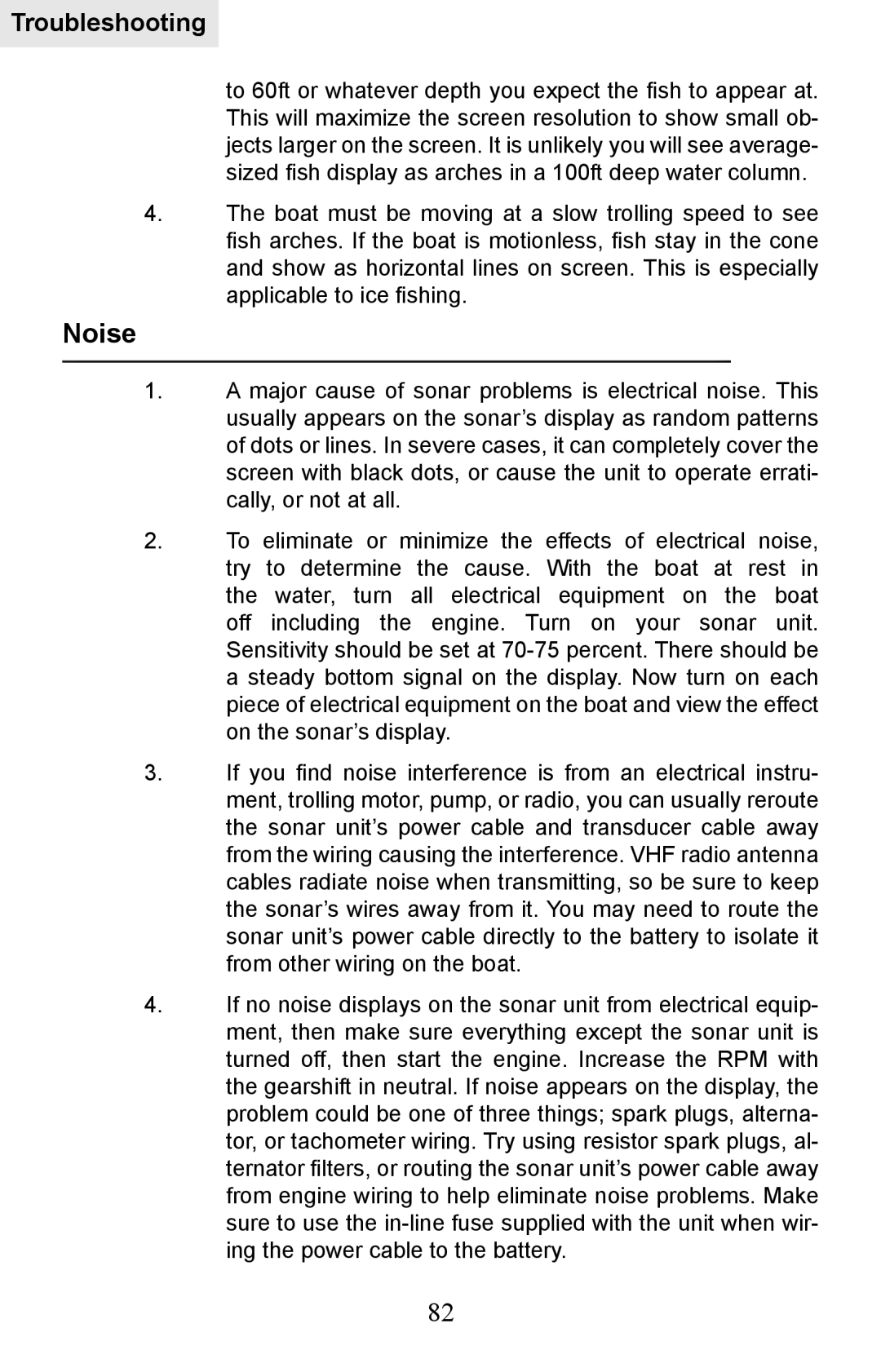
Troubleshooting
to 60ft or whatever depth you expect the fish to appear at. This will maximize the screen resolution to show small ob- jects larger on the screen. It is unlikely you will see average- sized fish display as arches in a 100ft deep water column.
4.The boat must be moving at a slow trolling speed to see fish arches. If the boat is motionless, fish stay in the cone and show as horizontal lines on screen. This is especially applicable to ice fishing.
Noise
1.A major cause of sonar problems is electrical noise. This usually appears on the sonar’s display as random patterns of dots or lines. In severe cases, it can completely cover the screen with black dots, or cause the unit to operate errati- cally, or not at all.
2.To eliminate or minimize the effects of electrical noise, try to determine the cause. With the boat at rest in
the water, turn all electrical equipment on the boat off including the engine. Turn on your sonar unit. Sensitivity should be set at
3.If you find noise interference is from an electrical instru- ment, trolling motor, pump, or radio, you can usually reroute the sonar unit’s power cable and transducer cable away from the wiring causing the interference. VHF radio antenna cables radiate noise when transmitting, so be sure to keep the sonar’s wires away from it. You may need to route the sonar unit’s power cable directly to the battery to isolate it from other wiring on the boat.
4.If no noise displays on the sonar unit from electrical equip- ment, then make sure everything except the sonar unit is turned off, then start the engine. Increase the RPM with the gearshift in neutral. If noise appears on the display, the problem could be one of three things; spark plugs, alterna- tor, or tachometer wiring. Try using resistor spark plugs, al- ternator filters, or routing the sonar unit’s power cable away from engine wiring to help eliminate noise problems. Make sure to use the
82
